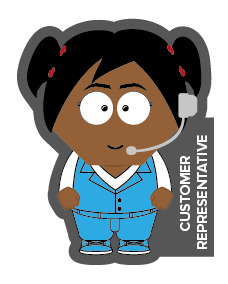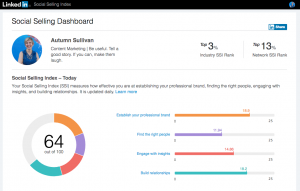— July 12, 2019

742680 / Pixabay
Storytelling has become a buzzword, as more companies recognize the power of story to attract and engage.
Storytelling in business is about weaving personal anecdotes, insights, observations and experiences into business communication.
This is especially powerful for service companies selling the intangible – knowledge, expertise, experience.
It is your unique story that can differentiate you from the sea of sameness.
Sorry to burst your bubble but…
Few businesses are truly special. As a service provider or consultant, you probably offer similar services to many other companies in your industry.
If potential clients can’t see anything of unique value in your offering, they will probably choose another provider based on price.
What separates you from the pack? Your story – the who (your personality and brand or your target audience), the why (your mission and motivation) and the how (your method, process, business model or service niche).
Your credentials aren’t enough
Too many businesses still use their websites and promotional materials as avenues to flout their credentials. But this is ineffective because clients tend to take these for granted.
If you’re selling consulting services for example, we assume you have the requisite training and qualifications for the job. That’s not enough to convince us to hire you or to choose you over a competitor.
To win our business, you need to form a connection. Sharing your story is a great start. And remember there is power in authenticity.
As software company founder Mike Kappel wrote in this piece in Forbes,“Your business’s story doesn’t need to be elaborate. In fact, if your business doesn’t have an earth-shattering history, your story shouldn’t try to create one. A genuine narrative is more likely to connect with consumers than one without a shred of truth.”
Know Your Story
The first letter in my K.E.E.P marketing system stands for KNOW. (Know your Customer. Know your Offer. Know your Story.)
marketing system stands for KNOW. (Know your Customer. Know your Offer. Know your Story.)
In knowing your story, you are able to share the why behind what you do, your passion and motivation. This helps personalize your business and make you more attractive to potential customers.
Knowing your story means articulating what you do and how you get results. It also explains who you serve and how others have used your business to achieve their goals.
Learn to Listen
Powerful storytelling comes from listening to your audience – in person, on social media, in email, in online chat rooms.
Listen to their complaints, desires, wants and needs, then reflect those in the stories you tell and in the services you provide.
Choose the Right Channel
Think of all the different audiences with whom you engage – customers, employees, competitors, stakeholders, even regulators. They don’t all hang out in the same place or consume content in the same way. Therefore, you can’t use a one-size-fits-all approach to reach them.
Identify where each audience consumes the bulk of its information and then craft content that speaks to that audience and leverages that channel.
Every Good Story Has A Moral
Effective content has a purpose. Don’t just flood your website or social media with content that has no strategy behind it. What is the driving force behind the stories you want to tell? What is the intended takeaway for the audience?
The moral of your story should be something that gives your clients a new perspective, teaches a new concept or helps them solve a specific problem.
Give Them Something They Can Feel
Even if your industry is considered the driest of the dry, your marketing content should be anything but. Businesses sell to people, so emotions always matter. Your audience won’t relate to your content if they simply don’t care.
For B2B audiences, you need to speak to the pain points and desires of both the business and the individual decision-maker. What are those issues that touch them personally as well as professionally?
For example, a payroll software company should explain not only how its app will reduce payroll errors and positively impact the bottom line (corporate benefit), but also how automating payroll will free the HR team to take on more strategic and personally fulfilling roles (individual benefit).
Try to tap into those underlying emotions that bubble under the surface of every major buying decision. Then you can build stories that hit your clients where it hurts, calm their worries, cajole and delight.
There is neuroscience behind this. As academic and author Paul Zak lays out here, storytelling is so powerful because it actually stimulates your brain to produce more oxytocin (the hormone that produces feelings of love, bonding and empathy).
5 Ways to Share Your Story
- Make your clients the hero of your story by creating compelling case-studies that showcase their business and how they achieved success with your product or service.
- Show who you are and how you think by adding your voice to industry discussions on social media, blogs or in by-lined articles in trade and authority publications.
- Develop white papers that answer customer questions and give in-depth illustrations of how your approach or offering can help a prospective buyer.
- Conduct original research into your market and share your unique findings as a powerful lead magnet.
- Build audience loyalty and share insights on topics they care about through blogs, podcasts, video and other channels.
All this content builds a narrative of your firm, your thought-leadership, your values and the service you deliver.
Conclusion
Crafting your story is critical work. Deep work.
Not in an airy-fairy, wishy-washy way, but in a tangible, affects-your-bottom-line, win-more-customers way.
Stories breathe life into numbers, data and analysis. They tell how you do what you do, why you do what you do and most importantly, how you will move your customer from where they are to where they want to be.
You need to arm your sales and marketing team with stories that answer your clients’ questions, address their concerns and engage their interest.
Don’t lose out on business because you’re not using the power of story to your best advantage.
Business & Finance Articles on Business 2 Community
(52)






